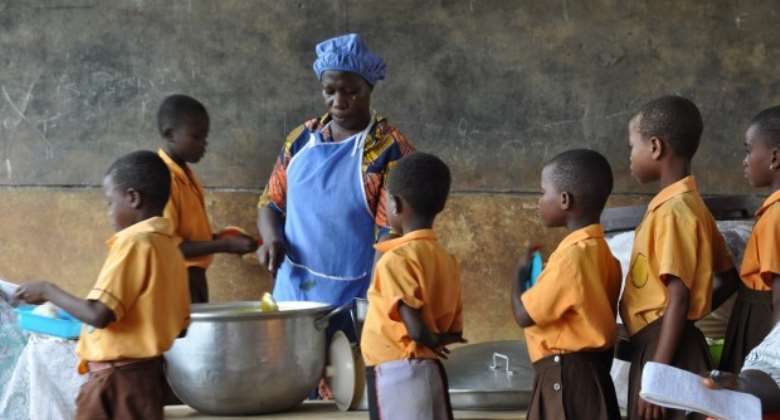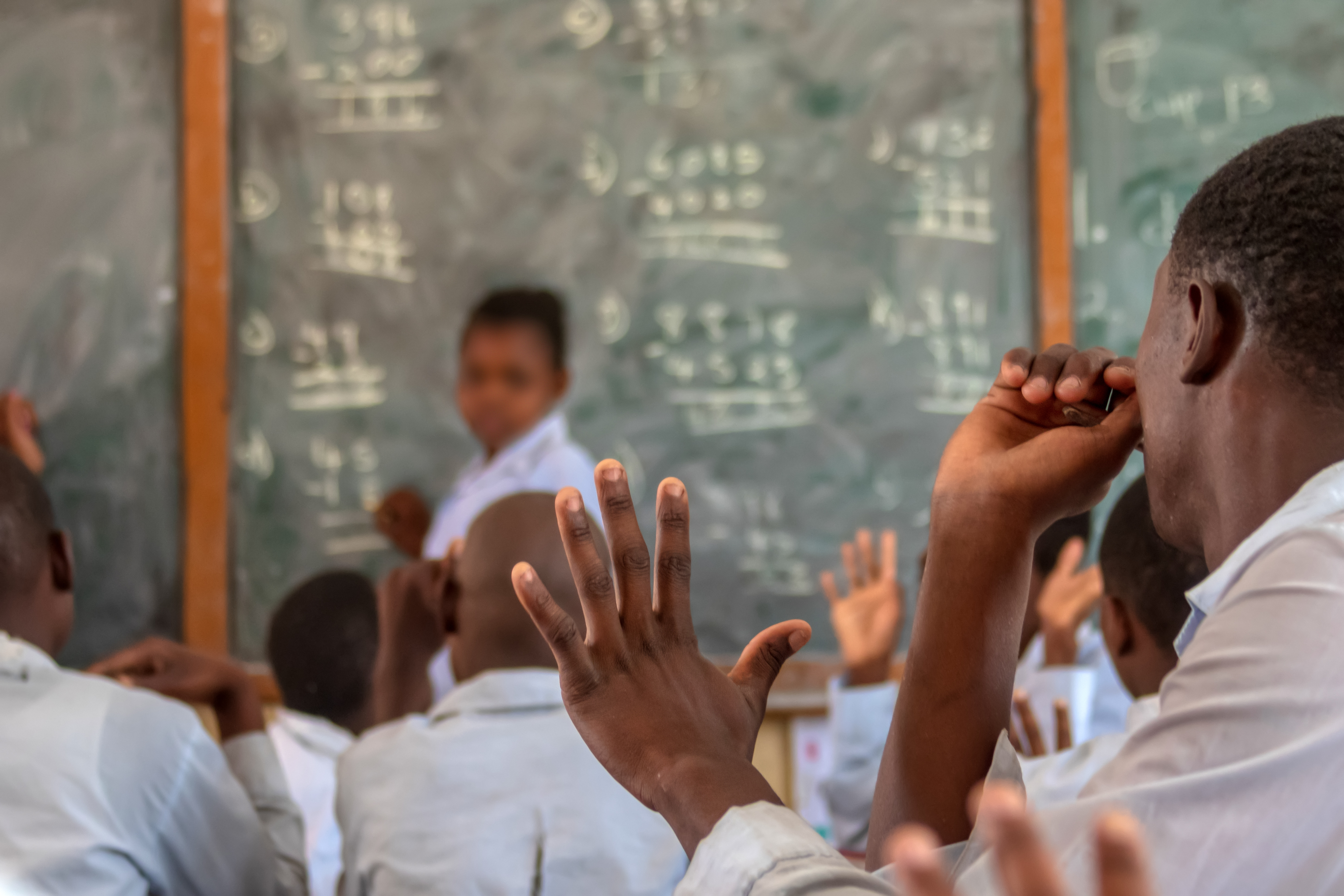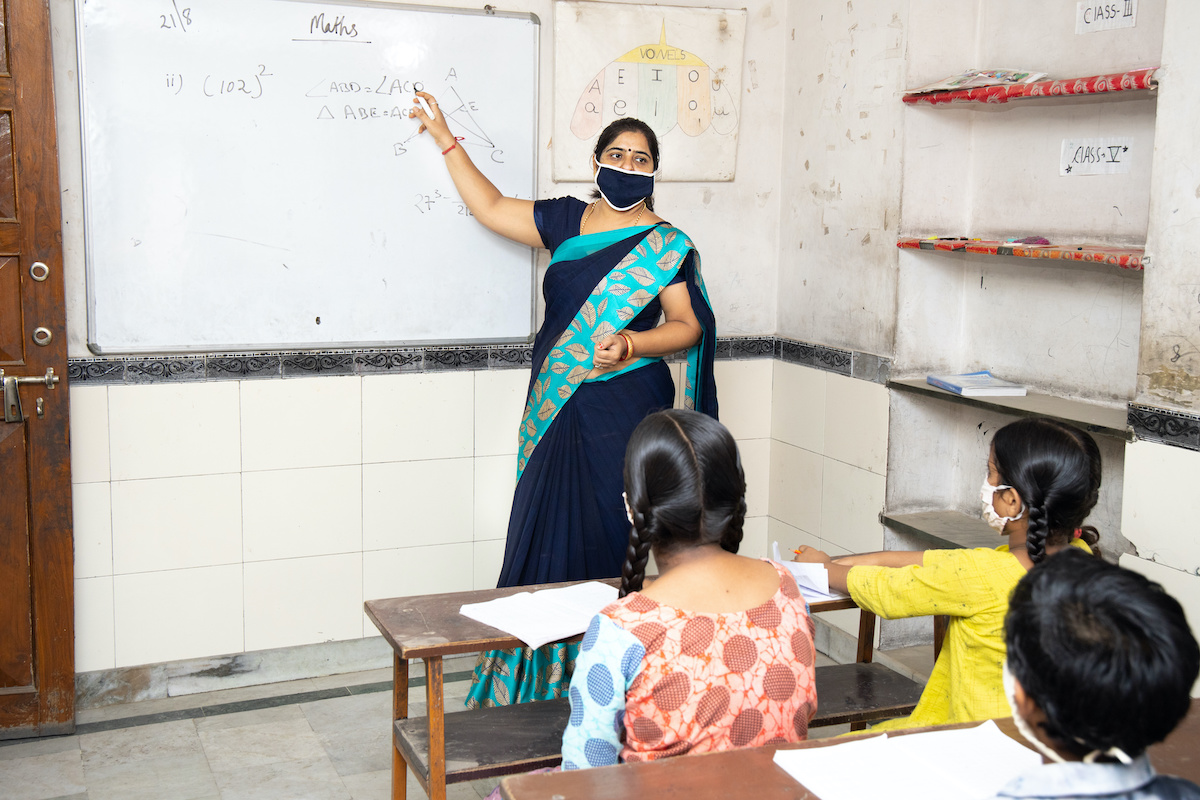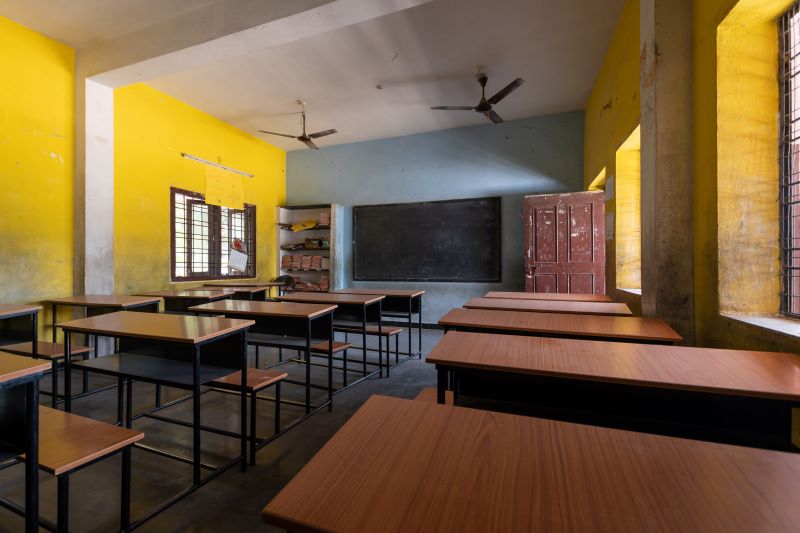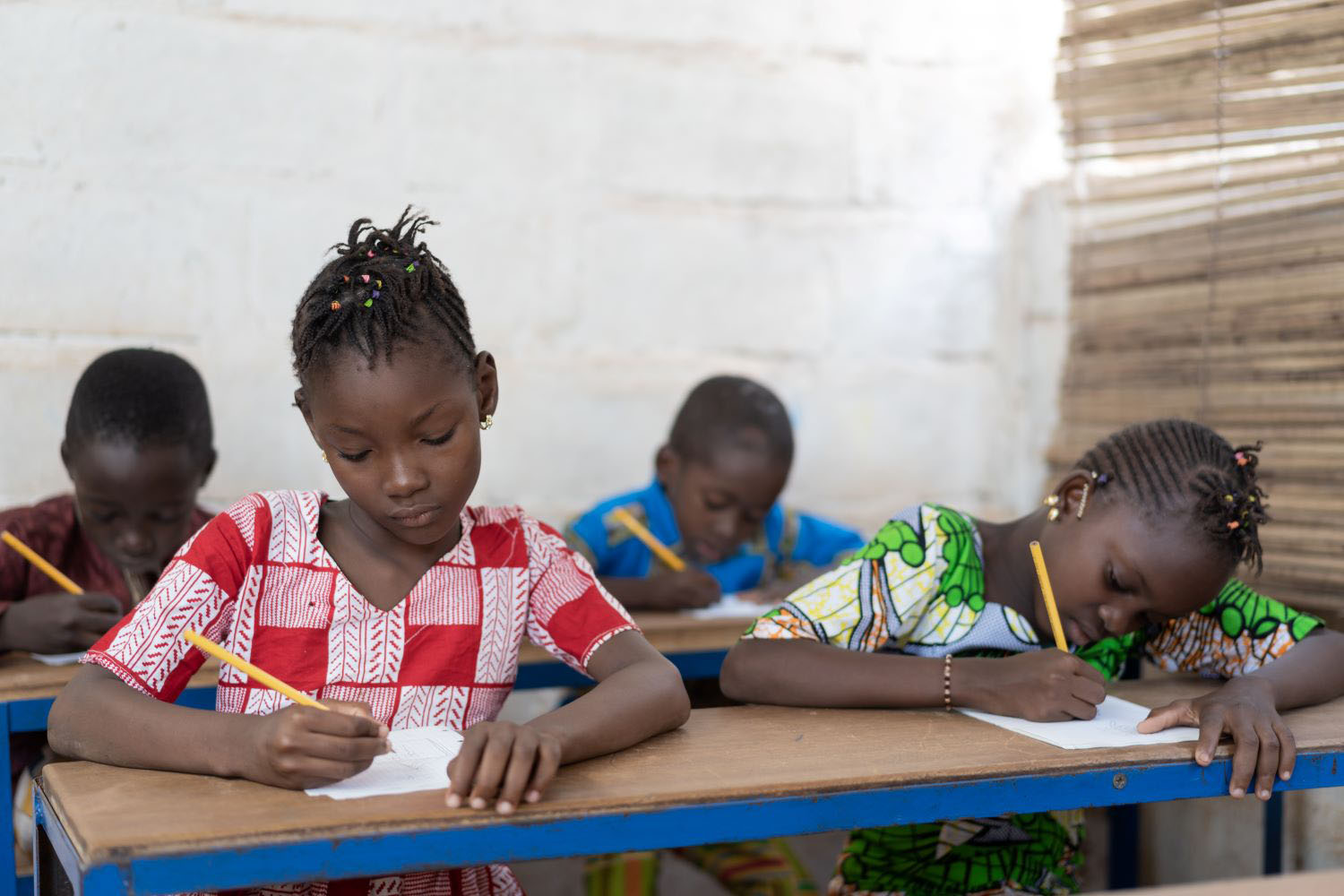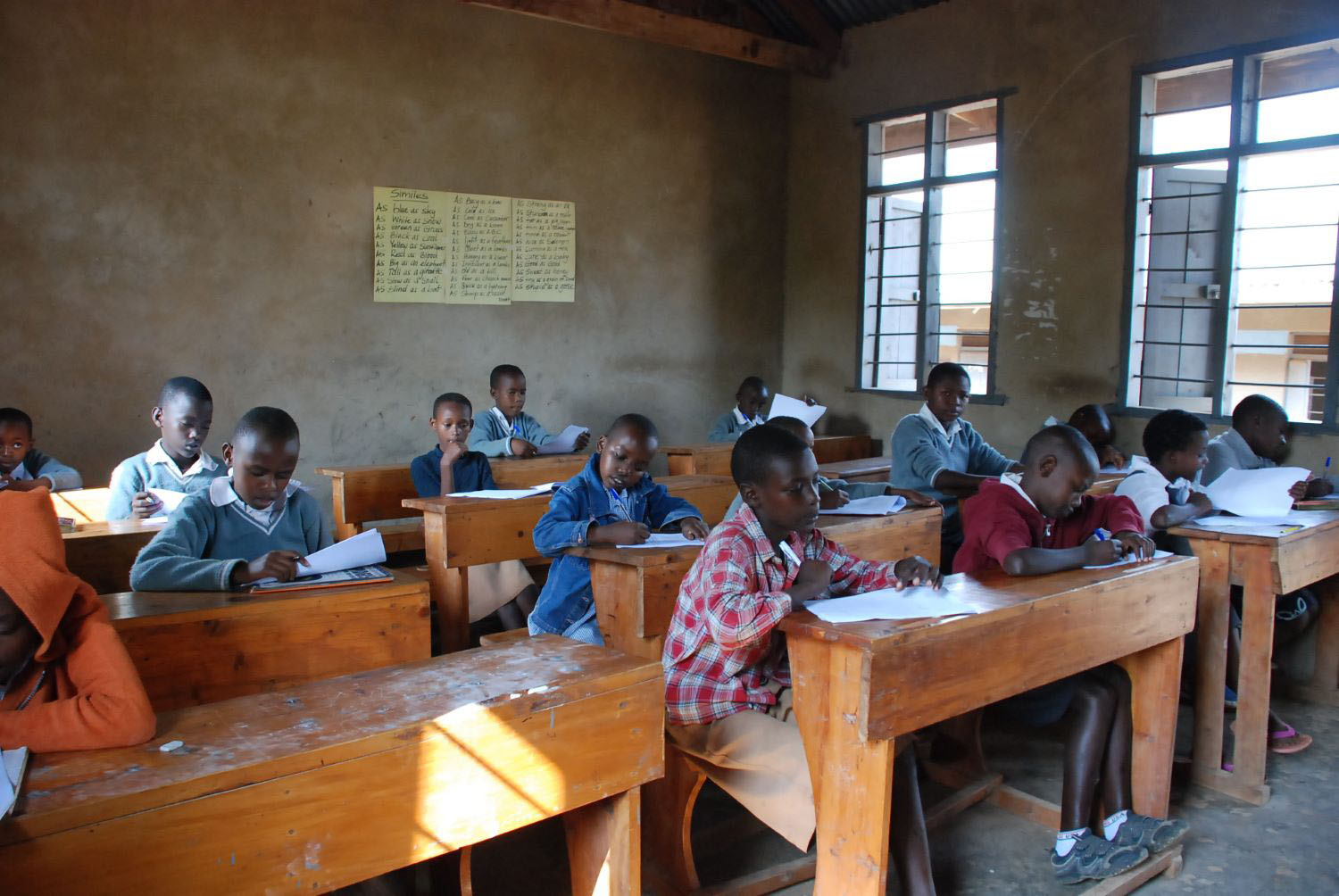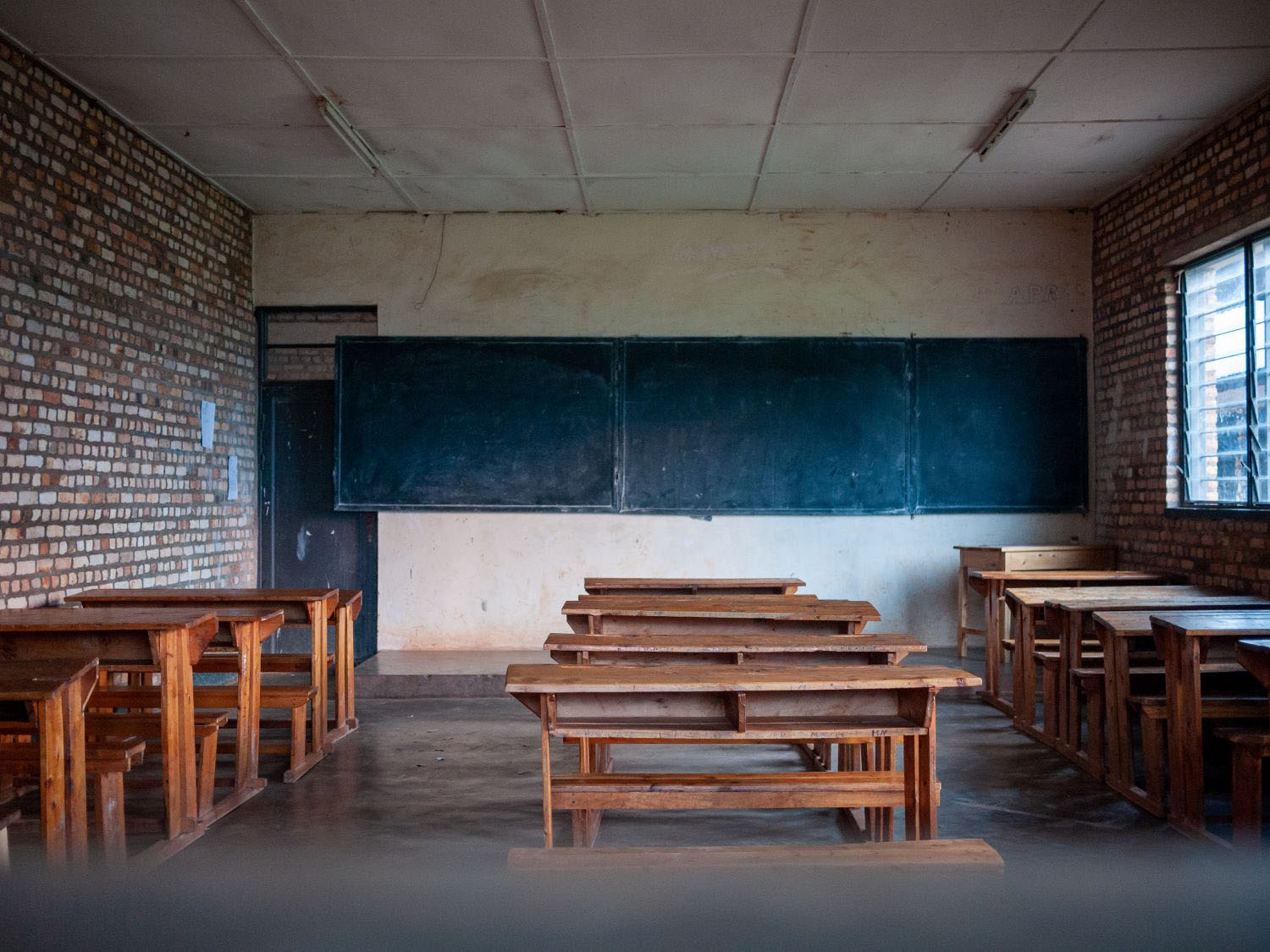Note: This blog post is part of a series in which CGD experts present arguments from “Schooling for All: Feasible Strategies to Achieve Universal Education” and invite (sometimes dissenting) commentary from experts within the global education community.
Lee Crawfurd and Aisha Ali: “The case for free secondary education.”
“How can countries achieve global education goals? Scalable policies are of critical importance. Perhaps the most obvious proven scalable education intervention is the expansion of free schooling. In this chapter, we assess what we can learn from the experience of free primary school reforms for the expansion of free secondary school. The lessons are simple: talk is cheap, and money matters. There are hundreds of cases of governments declaring that school is free but to little effect. Achieving increases in enrollment requires additional resources to reimburse schools for lost fee income and to build new schools in areas where they haven’t existed. Finally, we argue that concerns about the equity of spending on secondary school are misplaced. Removing fees for secondary school does provide a direct benefit to wealthier households who are already enrolled, but it also allows children from lower-income households to enroll for the first time. The costs are high but can pay for themselves through higher earnings in the long term.”
Figure: Removing fees helps people get more school
Read Lee Crawfurd and Aisha Ali’s full chapter.
Robert Osei and Kwabena Adu-Ababio: “Free schooling is a progressive policy if countries can afford it”
“Adu-Ababio and Osei (2018), using a microsimulation for Ghana, find that poverty in Ghana decreased when the country implemented the free senior high school policy. Additionally, the results showed that the reduction in poverty was even higher for female-headed households. So there is some empirical support for the position of the chapter that the removal of secondary fees is not regressive or as regressive as thought.”
[...]
“One of the more contentious issues that we would have loved to see the authors spend a bit more time on has to do with the effect of fee removal on the quality of education. The chapter notes that fee removal is positively associated with an increase in the pupil–teacher ratio but further argues that the results of the effect of class sizes on learning outcomes are mixed. While we cannot dispute those latter results, it is important to note that most developing countries have class sizes that are significantly higher than their counterparts in the more advanced countries and with educational outcomes that are lower. So is increasing class sizes an optimal policy when one holds everything else constant?”
Read Osei and Adu-Ababio’s full comment.
Comment: Free schooling is a progressive policy if countries can afford it
The chapter provides a review of public funding for universal primary education. More specifically it looks at what the effect of universal primary and secondary education is for developing countries. This is a very important topic as many developing countries grapple with persistent poverty and inequality coupled with the pressing need to improve human capital for growth and development. Additionally, funding for primary and secondary education requires significant fiscal sacrifices that impose additional pressure on the already constrained fiscal situation in most of these countries. Although international donor support may sometimes supplement a country’s public expenditure on education to meet global development goals, it may not be targeted or consistent enough to make the required impact. The discussion in the chapter is therefore of real significance for policy as it helps bring out issues on providing universal primary and secondary education and what its implications are. The chapter, in discussing issues of the effects of universal primary and secondary education, touches on the following key points.
The effect of fee removal on enrollment: The chapter notes that generally the effect of fee removal has been to increase the enrollment rates, with the effect smaller for secondary schools than it is for primary schools. The argument with respect to why fee removal engenders lower response for secondary enrollment is put down to factors such as the rationing of places at the secondary level and also to “other or hidden fees.” Since the direct effect of fee removal is to cater to those who have passed the national-level exams and cannot afford to enter secondary school, one will be excused to favor the hidden fees factor as more of a binding constraint for entry into secondary school. Indeed, the additional expenditure requirements needed for secondary-level education are much higher and so even where governments legislate for no additional charges, where schools have the option, they will still ration places. In Ghana, even where the government has insisted that no fee is charged to parents, various alumni have taken up many of the capital investments that are happening in senior high schools. Therefore in the absence of fees, enrollment will still be constrained by existing capacity, which is already stretched in many cases.
Progressivity or otherwise of free secondary education: The chapter argues that free secondary education is not regressive, a position that is contrary to what the literature generally suggests. This chapter makes a very good case for why this is the case, arguing that most of the literature has looked at the issue from a static point—if current secondary enrollment is dominated by the non-poor, then a fee removal will be a transfer to the non-poor. However, once you factor in behavioral responses, then you have a situation where the probability of the poor also benefiting from this transfer increases, with the potential to change the regressivity of free secondary results. Of course, the paper alludes to the fact that the result is dependent on the elasticity of the response with respect to the poor versus the non-poor. However, it goes on to argue that when one builds in the net future returns to education, it tilts the argument more in favor of the progressivity of free education. We have no doubt that this is a very strong argument and one that must be taken seriously. Indeed, some support for this position can be found in the literature. Adu-Ababio and Osei (2018), using a microsimulation for Ghana, find that poverty in Ghana decreased when the country implemented the free senior high school policy. Additionally, the results showed that the reduction in poverty was even higher for female-headed households. So there is some empirical support for the position of the chapter that the removal of secondary fees is not regressive or as regressive as thought.
Effect of fee removal on education quality: One of the more contentious issues that we would have loved to see the authors spend a bit more time on has to do with the effect of fee removal on the quality of education. The chapter notes that fee removal is positively associated with an increase in the pupil–teacher ratio but further argues that the results of the effect of class sizes on learning outcomes are mixed. While we cannot dispute those latter results, it is important to note that most developing countries have class sizes that are significantly higher than their counterparts in the more advanced countries and with educational outcomes that are lower. So is increasing class sizes an optimal policy when one holds everything else constant? This question of optimal class size will continue to engage researchers for some time to come. The one thing that cannot be disputed is what these class sizes mean for the complementary infrastructure required to maximize learning outcomes. Ultimately, and for any country, the requirement is to maximize the overall human capital given the resources at its disposal. Therefore, if increasing the numbers (for the given infrastructure) will be detrimental to learning outcomes, then some hard policy choices will have to be made. However, if the assumption is that countries have excess education infrastructure capacity and therefore can accommodate increased enrollment, then fee removal, in the long term, will improve growth and development.
To conclude, we note that the issues discussed in relation to fee removal are important issues that countries are confronted with, in the presence of a binding constraint in the limited fiscal space that countries face. Moreover, most developing countries today have significant fiscal challenges, with almost every facet of the social and economic infrastructure requirement being a priority. Improving learning outcomes, and therefore human capital, in the minds of many is something that must be given more prominence in the policies of developing countries. Therefore, the art of creating fiscal space to enable the removal of primary and secondary education fees is one that countries will continue to grapple with. It is for this reason that we are inclined to support the concept of “progressive universalism” in education finance in developing countries.
References
Adu-Ababio, K., and R. D. Osei. 2018. “Effects of an Education Reform on Household Poverty and Inequality: A Microsimulation Analysis on the Free Senior High School Policy in Ghana.” WIDER Working Paper 2018/147. Helsinki: UNU-WIDER
Pauline Rose: “Public secondary education spending needs to prioritize the poorest”
[Crawfurd and Ali] suggest, ‘Simply, when fees fall, poorer students are more likely to enroll.’ This is simply incorrect.
“Importantly, the chapter fails to recognize that in countries making the most difficult decisions about resource allocation, many children do not make it to the end of primary school, so will not benefit from fee abolition. [...] In low-income countries, less than 40 percent are enrolled in secondary schools, and only around 60 percent in lower-middle-income countries. The majority who are not enrolled are from poorer households. In sub-Saharan Africa, for example, drawing on our analysis from the latest Demographic and Health Surveys data, only around one-quarter of the poorest make it to the end of the primary cycle, compared with around 85 percent of the richest in the survey. Making secondary schooling free and constructing more secondary schools will make little difference to them.”
Read Rose’s full comment.
Comment: Public secondary education spending needs to prioritize the poorest
Debates on free secondary schooling have become heated in the context of the Sustainable Development Goals. Whether to include “free” was one of the issues most fiercely debated in relation to Target 4.1—with international advocacy organizations such as the Malala Fund and ActionAid pushing for the word “free” to be included, with many international funding bodies and some national advocacy organizations suggesting greater caution, particularly in contexts that had yet to achieve universal primary education with quality. The chapter by Crawfurd and Ali appears to side with international advocacy organizations.
In an ideal world, who would disagree with free universal secondary education? The benefits of secondary education for individuals and societies, as outlined in the chapter, are well noted. But we are not in an ideal world. Governments have to make tough decisions about how they prioritize their spending, and face difficult trade-offs. In a context where additional public resources are not forthcoming, there is a need to identify who does and does not benefit from free secondary education.
In this short commentary, I highlight five key interconnected points in response to Crawfurd and Ali’s chapter, identifying flaws in their arguments.
- Fee abolition is a political win, but does this mean it is right for all countries now?
The authors begin by citing a Center for Global Development (CGD) survey of senior officials from 35 low- and middle-income countries that found “school fee removal was by far the most commonly cited ‘most important education reform of the last five years.’ ” This is hardly surprising. Since the movement to abolish primary school fees in the 1990s and 2000s, it is widely documented that this is seen as a vote winner. Having achieved political success at the primary level, political parties have shifted attention to fee-free secondary education, more recently using the SDGs as justification (as in the recent cases of Ghana and Malawi, for example). This does not necessarily mean it is the right thing to do, as outlined in points below.
- Muddling of evidence from primary and secondary fee abolition, and from widely different geographical contexts and time periods
It is beyond the time and scope that I have for this commentary to undertake a thorough review of the literature, nor does it allow time for a thorough reassessment of the literature that is referred to in the chapter. However, it is apparent that the chapter draws on evidence in inappropriate ways. Notably, it brings in evidence on fee abolition from experience at the primary level to justify fee-free secondary education. This evidence has been widely cited elsewhere, with near unanimous agreement that primary schooling should be fee free at the point of entry (even though there are still debates about whether this necessarily means it should be fee free or can also be achieved with the use of vouchers, for example). While some lessons can be learned from the primary experience, it cannot be simply extrapolated to secondary schooling.
One reason for differential effects is that, unlike primary schooling, access to public secondary schooling is often highly selective and so, in some countries, those from richer households are much more likely to gain access (i.e., they are more likely to have made it to the end of primary schooling, and have had the benefit of better-quality primary schooling). For those from poorer households who do complete primary school, given they are less likely to be selected for government secondary schools where there is a rationing of places, they face the choice of not continuing to secondary school at all or paying fees for private schooling (with the role of the private sector in secondary schooling being very different than in primary schooling—an area that has received too little attention).
Some issues of differential effects at primary and secondary levels are mentioned in passing in the chapter—for example, that the effects of fee abolition are smaller for secondary school than for primary school. The chapter also notes that secondary school fees make up a large share of public school budgets, and so cutting fees is not cheap. However, the chapter is not consistent in how it draws on evidence from primary school experience.
Another aspect of muddled evidence in the chapter is pulling together literature from very different geographical contexts and time periods—with, for example, Venezuela (1980), the Philippines (1998), and Peru (1993) in the same sentence as Kenya (2008)—to make the case of positive experience of removing secondary school fees. Toward the end of the chapter, there is reference to the effects on the poorest, referring to “price elasticity of demand” for education, indicating poorer households benefit more. Again, it uses a mix of countries and time periods, and at least some focusing on primary schooling, ranging from Peru (1990) to Madagascar (2006) and South Africa (2012/13). The chapter also looks at before/after evidence based on a couple of studies in Uganda focused on primary schooling, but, again, this evidence cannot be extrapolated to secondary schooling.
The chapter does not refer to other literature on Kenyan’s secondary fee abolition experience that has been more skeptical on the effects for those from more disadvantaged backgrounds, nor other related evidence from countries such as Ghana and Malawi. Our initial analysis from these two countries identifies adverse effects on poorer households, including for reasons given above. In addition, in Ghana, there is evidence of a reallocation of government and donor spending from primary to secondary education in the context of the “natural experiment” before and after the secondary fee abolition. This is in a context where only around one-third of the poorest complete primary school.
- Does expanding enrollment undermine learning?
The chapter includes a short paragraph to suggest that expanding enrollment from the removal of fees does not undermine learning. Probably one of the most important lessons from the more extensive evidence on primary schooling is that where fees have been abolished without additional resources, the implications have been adverse for quality. Indeed, this is the conclusion of one of the papers by fellow CGD colleagues cited in the chapter, which states: “FPE [free primary education] reforms are associated with an acceleration of the negative trend in school quality but school quality was decreasing before the introduction of these reforms and FPE reforms might also have been associated with a reduction of resources per students” (Le Nestour, Moscoviz, and Sandefur 2021, 29). Similar points have been raised in other studies. However, the chapter uses this paper to argue there “was no change in school quality following the removal of fees” (and also does not note that it is based on primary school fee abolition).
While the evidence cited in the chapter on whether learning has been undermined is from primary schooling, the effect is likely to be even more extreme for secondary schooling given the higher cost. The impact could also be greater for more disadvantaged students who are more likely to attend secondary schools where resources become even more constrained.
Following the adverse effects on quality as a result of primary fee abolition without sufficient additional resources, some countries provided capitation grants to schools. The design of these grants had important implications for equity. For example, where grants are used on the basis of children enrolled, it disadvantages locations with large numbers out of school, which are likely to be poorer. Some countries have sought to address this by using a formula to ensure poorer parts of the country receive a larger share, or by weighting the formula according to characteristics of the population who are likely to need more resources. The chapter, however, does not consider these issues with respect to the implications for secondary schooling.
- Omissions in barriers to universal secondary education
In addition to the focus on fee abolition, the chapter includes an assessment of the building of new schools. It does not consider the shift in some countries toward basic education (i.e., the combining of primary and lower secondary grades, which means that new secondary schools do not necessarily need to be constructed). Nor does it consider the role of the private sector, which, as mentioned, is likely to have quite different effects at the secondary level compared with primary.
There are other fundamental demand-side barriers that would need tackling, such as those faced by adolescent girls as they reach puberty. There is a mention in passing of the benefits of school construction for girls in Afghanistan given the reduction of the distance to school, but this is in the context of community schools serving primary-school-aged populations. There are also many other well-recognized economic, social, and cultural barriers that adolescent girls from poor households face which are not considered. While I appreciate that a chapter of this length cannot cover everything, the omission of these key areas that would need to be tackled to achieve universal secondary education is a concern. The omission of gendered effects is even more stark given the chapter’s dismissal of equity effects, to which I now turn.
- Misunderstanding of equity effects and progressive universalism
The abstract concludes: “Finally, we argue that concerns about the equity of spending on secondary school are misplaced. Removing fees for secondary school does provide a direct transfer to wealthier households who are already enrolled, but it also allows children from lower-income households to enroll for the first time. The costs are high but can pay for themselves through higher earnings in the long term.”
The chapter pitches itself against what it refers to as “conventional wisdom” in relation to arguments of regressivity of fee abolition. Building on my points above, the authors’ casual dismissal at the end of the chapter of equity concerns that are highlighted in much of the existing literature is not justified. They suggest, “Simply, when fees fall, poorer students are more likely to enroll.” This is simply incorrect.
Importantly, the chapter fails to recognize that in countries making the most difficult decisions about resource allocation, many children do not make it to the end of primary school, so will not benefit from fee abolition. As Figure 3.1 in the chapter shows, in low-income countries, less than 40 percent are enrolled in secondary schools, and only around 60 percent in lower-middle-income countries. The majority who are not enrolled are from poorer households. In sub-Saharan Africa, for example, drawing on our analysis from the latest Demographic and Health Surveys data, only around one-quarter of the poorest make it to the end of the primary cycle, compared with around 85 percent of the richest in the survey. Making secondary schooling free and constructing more secondary schools will make little difference to them. And, as noted, even if they do make it to the end of the cycle, they are less likely to be selected to government secondary schools where there is a need to ration places. So a number of the poorest will have no chance of benefiting from the abolition of secondary fees. As such, in such contexts, fee abolition results in a redistribution of public funds from the poorest to the richest.
Finally and crucially, in the context of limited resources, governments face trade-offs between universal versus targeted approaches. Their criticism in the chapter of a targeted approach, noting that “much-studied interventions such as cash transfer programs reach as few as 20 percent of Africans,” misses the point that cash transfer programs are about redistribution to those most in need. A targeted approach has the potential to remove secondary school fees together with other costs of schooling for the poorest (as experience from Bangladesh and CAMFED’s program in Tanzania show, for example). This is important because the poorest face cost barriers beyond fees that can be prohibitive, such as clothing, stationery, transport, and so on. For this reason, evidence from cash transfer programs highlights that the size of the transfer matters, such that a balance needs to be considered between the amount provided to each beneficiary and the number of beneficiaries who can be reached.
More generally, the chapter shows a lack of understanding of a progressive universalism approach. This approach is about prioritization—it does not say that ultimately secondary schooling should not be free. Indeed, that is the desired goal.
There are other aspects of the chapter that could be further critiqued (e.g., technical arguments around benefit incidence analysis, rates of return, price elasticity of demand, etc.—all of which have been heavily debated for several decades). But to do so would be beyond the scope of this short piece. It suffices to say that sweeping statements made in relation to these in the chapter are often not justified.
If the intention of the chapter is to provoke people like me, it has been successful. But the flippant dismissal of arguments made in other research that has evolved over the last few decades in relation to the debates on the effects on equity of fee abolition implies, at best, naïveté and, at worst, danger signs, given the influence that CGD has in some international policy circles.
Finally, I appreciate CGD’s offer for me to write this brief response. In going forward, I hope that we can work collaboratively to assess ways to further strengthen the evidence base that addresses the challenges and opportunities to financing secondary education in a way that ensures everyone has the chance to access a good-quality education.
References
Le Nestour, A., L. Moscoviz, and J. Sandefur. 2021. “The Long-Term Decline of School Quality in the Developing World.” Washington, DC: Center for Global Development.
Disclaimer
CGD blog posts reflect the views of the authors, drawing on prior research and experience in their areas of expertise. CGD is a nonpartisan, independent organization and does not take institutional positions.


